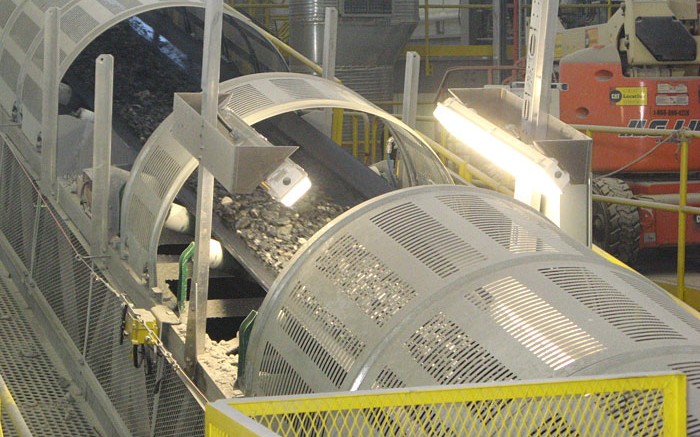VANCOUVER — If there is one outcome to avoid in the political arena, it revolves around agitating interest groups on both sides of the issue. The Parti Québécois (PQ) managed just such a manoeuvre on May 6 when Quebec’s minority government outlined a new mining royalty regime that will see the province assume a dubious distinction in 2014, with the highest royalties on the industry in Canada.
Companies with operating mines in Quebec can breathe a slight sigh of relief, because by most reports, the royalty and tax schedule proposed is not as bad as it could have been, especially given some of the outrageous claims Premier Pauline Marois made on the campaign trail. At the time Marois was championing a 30% royalty on mining companies with what she labelled “super profits,” and threatened to impose a minimum 5% tax on mineral-resource extraction.
That proposition predictably ruffled a lot of feathers in the industry, and mobilized interest groups that viewed the proposed changes as crippling to Quebec’s ability to attract mining investment. Mining Association of Canada president and CEO Pierre Gratton went as far as to state that the provincial government was meddling in an industry it did not understand.
“This government’s approach reveals a limited knowledge of the sector and the global reality in which it operates today,” Gratton commented in a March release. “The actions of this government go against decades of sound economic policies advanced by Quebec governments of all political stripes, including the Parti Québécois.”
Apparently after months of collaboration with interest groups, First Nations and industry representatives, Marois and company softened their stance, as the proposed schedule falls short of meeting campaign promises. The new mining tax regime, which will take effect in January 2014, is a hybrid system with two components that are not cumulative — meaning a company would pay the higher of the two amounts.
Firstly, there is a minimum mining royalty imposed on all mining companies that will be calculated on the basis of the output value at the mine shaft head, which in turn will be based on the gross value of annual output net of processing costs. The tax rate will equate to 1% of the first $80 million of output value, and 4% of the value once a company exceeds that threshold.
The second element is a progressive tax scheme based on annual mining profit. A company’s profit margin will be determined by dividing its mining profits by the total gross value of annual output from all of the company’s mining operations. For miners with a profit margin from zero to 35%, the rate will remain near current levels with a 16% royalty. Companies that post a margin between 35% and 50% will be taxed to a maximum of 22%, while those in the 50% to 100% profit-margin bracket could see rates jump as high as 28%.
According to numbers released by the PQ, the new regime will generate between $73 million and $200 million more annually over the next seven years than the current regime. Over an 11-year period ranging from 2014 to 2025, the proposed tax schedule would add between $770 million and $1.8 billion in additional revenue, which the government plans to use to pay down Quebec’s $193-billion gross debt.
Analysts have begun to weigh in on potential financial impacts for some larger mineral producers with assets in Quebec. BMO Capital Markets analyst Tony Robson speculated that the new regime could drop his valuation on U.S. iron-ore producer Cliffs Natural Resources (CLF-N) by 5%. Robson wrote that “the impact to Cliffs is manageable for the group overall, but appreciable at the Bloom Lake and Wabush mine level.” According to BMO analysts the increased taxes could negatively impact Cliffs’ earnings by US13¢ per share, or 4% in 2015.
Meanwhile, BMO Capital Markets analyst John Hayes ran similar numbers for gold producer Osisko Mining (OSK-T), and concluded the effect on the company would be “modest” following the tax revisions. Hayes wrote that “we believe clarity on the new tax regime is likely to have a greater positive impact on the company’s share price than the potential [1.2% to 1.7%] increase in Quebec taxes for Osisko over the course of [2014 to 2017].”
Though the new tax regulations will likely have marginal impact on successful producers, the effect on newly commissioned mines and exploration-stage initiatives is still an unknown. Where smaller or new operations were previously sheltered from taxation, those companies will now be required to pay the 1% rate even if they have yet to reach the $80 million output value cut-off range. With the highest taxation scheme in the country, Quebec will also have to deal with a competition for exploration dollars.
Of course, on the other side of the coin stand those who claim Marois failed to live up to campaign promises and took a soft stance on the mining industry, like Natural Resources Minister Martine Ouellet.
Finance Minister Nicolas Marceau cited a 25% fall in metals prices since 2010, and explained that the government had to take into account macroeconomic weaknesses — which begs the question of whether the PQ should have bothered to potentially alienate mid-term mining investment in favour of a bump in taxation revenue that looks, at first glance, relatively marginal.


Be the first to comment on "Commentary: Quebec’s mining royalty proposal misses the mark"